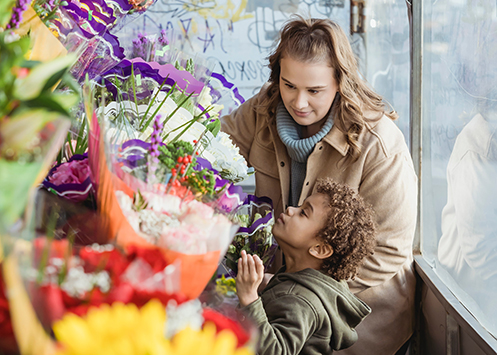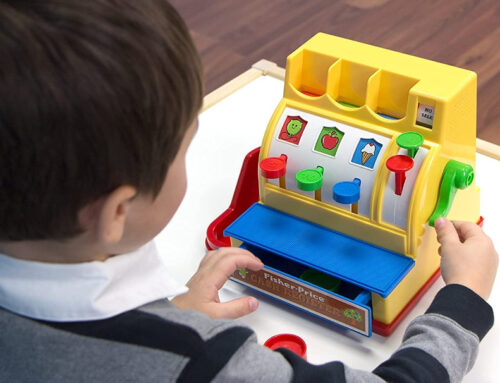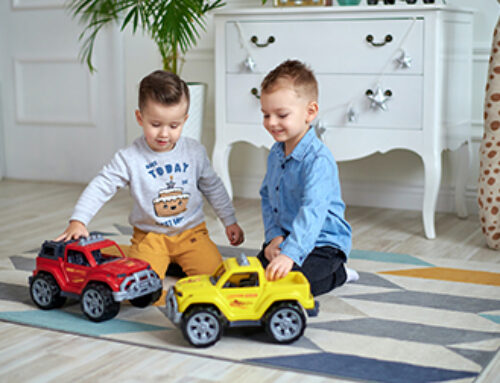Being patient and maintaining an understanding approach to children can be challenging, particularly when they are having highly emotional moments. Have you ever felt like your child is just trying to “push your buttons”? Our reactions to these moments are so powerful to our children and will shape how they respond to their emotions. Finding a calm way to respond to their emotional needs while managing your own emotions can be difficult but it can also model and teach our children different ways of handling challenging emotions. This blog gives great insight on the importance of our reactions to challenging emotions and how we can support our children with these feelings.
Think about the last time you faced an emotionally challenging situation. Did anyone tell you “It’s fine, everything will get better” when you did NOT feel fine? Who did you turn to when you needed emotional support? How did they give that to you? Typically, we trust people who “get it” and don’t judge us or our emotions but seek to understand our perspectives. These trusted friends, family members, or coworkers can emotionally hold our thoughts and concerns while helping us to sort through our feelings and find our own solutions on our terms.
For our children, their emotions can feel equally big, challenging, and sometimes overwhelming and they can benefit from adults who “get it”. But this can be hard for adult family and caregivers. Sometimes we try to limit their emotions, to “shut it down” when it’s too much for us, or to move them to feelings like calm or happy that feel safer to us. Other times we may take their feelings personally or feel defensive that they are mad/frustrated/sad/disappointed at us. When we tell our children they are fine, to stop crying, or to put on a happy face when they do not feel happy, we are limiting their emotional vocabulary, discouraging them from understanding all of their feelings, and letting them know we are only comfortable with limited feelings. Without an adult to help them develop their emotional language, help them to understand all of their emotions, or be comfortable with all of their feelings, children can feel lost and unsupported during challenging times.

By focusing on how the child feels about the situation, you can give yourself some room to examine the situation with less emotional baggage. For instance, a meltdown in the grocery store when you’re trying to get home to make dinner can feel like “Argh! Again! Why do you always do this to me at the checkout?” From the child’s perspective, it may feel like “How much longer do I have to stand here and wait at the checkout?! I want to touch all of the magazines, grab those balloons, and eat all of these candies but Dad says no! Why does he always say no when I want stuff?? I want to go home now and eat dinner!” And now we have two emotionally frustrated and exhausted people stuck in the check out line fighting one another over things they can’t control.
A shift in perspective might look like:
Dad: Sweetheart, you have been such a good helper at the store. Thank you for helping me pick out the apples. Now we have to wait in line for the checkout but, as soon as we are done, we can go home and you can have a snack.
Child: Can I have that chocolate bar? And that gum? And that balloon?
Dad: Don’t they look delicious? I am hungry. Are you hungry too?
Child: Yes! I want a snack now!
Dad: It is so hard to wait when our bodies want to eat. Feeling hungry can be hard. But let’s think about what you want for a snack. Is there anything we are buying today that you want to eat for a snack?
In this scenario, Dad is focused on using positive language to highlight the child’s role as a helper, understanding the child’s perspective, putting words like “hungry” to their feelings, and respecting them while also redirecting them to choices he approves of.
In times of intense emotions, it can help to take a physical step back, make sure everyone is safe, and then take a moment to breathe deeply and gather your thoughts. Calming yourself first allows you to think about a broader range of responses. Responding from your first initial emotional response may limit you to using the same approaches over and over. With more tools, you can look at your child’s perspective, help them to identify their emotions, calm them through a hug or cuddle, and help them find a solution. Getting caught up in emotional power struggles is exhausting for everyone involved and limits teaching opportunities for how to handle emotions in healthful ways. Taking a moment to calm ourselves allows us to model different approaches, stay open to thinking about our children’s feelings and experiences, and avoid feeling like our buttons are getting pushed.

Blue Bird Day fosters socialization, sensory regulation, and pre-academic learning in children ages 2-7 years in therapeutic rotations that simulate preschool and kindergarten settings. Our compassionate therapists practice a relationship-based and family-centered approach, provide parent training, and collaborate on goals and individualized intensive treatment plans for your child.
We believe in a collaborative and multi-disciplinary team approach to therapy. A team of occupational therapists, speech-language pathologists, dietitians, developmental therapists, behavioral therapists, physical therapists, and therapeutic assistants are created for each child to ensure child and family are fully supported and the best possible results are achieved.
Options for individualized, group and virtual therapy sessions are available as well.
Want to learn more or you have a specific question? Feel free to connect with us here!



